- Home
- Nathaniel Philbrick
The Mayflower and the Pilgrims' New World Page 2
The Mayflower and the Pilgrims' New World Read online
Page 2
But in the end, all arguments for and against sailing to America ended with the conviction that God wanted them to go. These English separatists believed it was their spiritual duty to found an English plantation in the New World. “We verily believe and trust the Lord is with us,” John Robinson and William Brewster, a leading member of the congregation, wrote, “and that He will graciously prosper our endeavors according to the simplicity of our hearts therein.”
Their time in Leiden, they now realized, had been a mere rehearsal for the real adventure. Because of the extraordinary spiritual connection they had developed as exiles, they were prepared for whatever lay ahead. “[I]t is not with us as with other men,” Robinson and Brewster confidently insisted, “whom small things can discourage, or small discontentments cause to wish themselves home again.” Or, as one of their number, a thirty-year-old corduroy worker named William Bradford, later wrote, “They knew they were pilgrims.”
◆◆◆ Taking Bradford’s lead, we refer to them today as the Pilgrims, a name that is as good as any to describe a people who were almost always on the move. Eventually, Bradford became their leader, and if not for his steady, often forceful leadership, it is doubtful whether there ever would have been a colony at all. Without his Of Plymouth Plantation, certainly the greatest book written in seventeenth-century America, there would be almost no information about the voyage with which it all began. For William Bradford, however, the true voyage had begun close to twenty years before.
William Bradford was born in the tiny farming town of Austerfield, Yorkshire, deep in northern England. Although he came from a family of well-to-do farmers, Bradford had experienced more than his share of troubles. By the time he turned twelve, he had lost not only his father, his mother, and a sister, but also the grandfather who had raised him. soon after moving in with his two uncles, he was struck by a mysterious illness that prevented him from working in the fields. Bradford later claimed that his “long sickness” had saved him from “the vanities of youth, and made him the fitter for what he was afterwards to undergo.” Most important, his illness gave him the opportunity to read.
Lonely and intelligent, he looked to the Bible for consolation and guidance. For a boy in need of instruction, the Geneva Bible, translated in the previous century by a small team of English ministers and equipped with helpful notes, was just the thing. There was also John Foxe’s Book of Martyrs, an account of the Protestants killed by Queen Elizabeth’s Catholic predecessor on the throne, “Bloody Mary.” Foxe insisted that England was, like Israel before it, God’s chosen nation. This had a deep and lasting influence on Bradford, and as Foxe made horrifyingly clear, to be a godly Englishman sometimes required a person to make the ultimate sacrifice.
Bradford was just twelve years old when he became uneasy with the way God was worshipped in Austerfield. He eventually found what he was looking for when he met William Brewster, the postmaster in a neighboring town called scrooby. At Brewster’s home, a group of separatist Puritans gathered every sunday to worship in secret under the direction of two ministers, one of whom was the young John Robinson.
At the turn of the seventeenth century, there were a lot of debates about the proper way for a Christian to worship God. Puritans believed it was necessary to go back to the absolute beginning of Christianity, before the church had been corrupted by man. To them, the New Testament provided the only reliable account of Christ’s time on earth, while the Old Testament contained a rich storehouse of truths. If something was not in the scriptures, it was a man-made distortion of what God intended. The Puritans had chosen to turn away from thousands of years of tradition in favor of a text that gave them a direct and personal connection to God.
• Title page of a 1583 edition of John Foxe’s Book of Martyrs.
• St. Helena’s Church in Austerfield, Yorkshire, where Bradford worshipped as a young boy.
A Puritan had no use for the Church of England’s Book of Common Prayer, since it tampered with the original meaning of the Bible. Even more importantly, Puritans saw no reason for the system of bishops that ran the Church of England. The only biblically acceptable organizational unit was the individual congregation.
Taking their cue from the apostle Paul’s words to “come out among them, and be separate,” the separatists were Puritans who had determined that the Church of England was not a true church of Christ. If they were to remain true to their faith, they must form a church of what were known as “visible saints,” members who supported each other in the proper worship of God. If members of the congregation strayed from the true path, they were criticized; if they failed to correct themselves, they were forced to leave the congregation. A separatist congregation shared in an intense bond of spirituality and discipline that touched every aspect of everyone’s life.
King James viewed all Puritans as troublemakers, and at a gathering of religious leaders at his palace in Hampton Court, he angrily declared, “I shall harry them out of the land!” The congregation that met at Brewster’s house knew that it was only a matter of time before the authorities found them out.
sometime in 1607, the bishop of York became aware of the meetings at Brewster’s manor house. some members of the congregation were thrown in prison; others discovered that their houses were being watched. It was time to leave. But if King James had vowed to “harry” the Puritans out of England, he was unwilling to provide them with a legal means of leaving the country. A person needed official permission to voyage to the Continent, something the authorities refused to grant the separatists. If they were to sail for Holland, they must do it secretly.
For a group of farmers, most of whom had rarely, if ever, ventured beyond the Nottinghamshire-Yorkshire region, it was a scary prospect. But for seventeen-year-old William Bradford, who would lose the people upon whom he had come to depend if he did not follow them to Holland, there was little choice in the matter. Despite the protests of his friends and relatives, who must have pointed out that he was due to receive a comfortable inheritance at age twenty-one, he decided to sail with John Robinson and William Brewster to a new land.
◆◆◆ Their escape from England did not go well. The first ship captain they hired turned out to be a traitor and a thief who surrendered them to the authorities. After their leaders spent several months in jail, they tried again. This time they hired a trustworthy Dutch captain, but they had not yet loaded all the men or any women and children onto the vessel when the local militia appeared. Fearing capture, the captain set sail for Amsterdam, leaving the women and children weeping as their husbands looked on from the deck of the departing ship. It was several months before they were all reunited in Holland.
Once in Amsterdam, the separatists found themselves thrust into conflict with other English separatists who had come before them. Not wanting to get involved in their debates or worship, they moved on. showing the firmness, sensitivity, and judgment that came to characterize his ministry in the years ahead, John Robinson led his congregation to the neighboring city of Leiden, where they were free to establish themselves on their own terms.
In Leiden, Robinson found a house not far from the Pieterskerk, one of the city’s largest churches. In the garden behind Robinson’s home, they created a miniature village of close to a dozen houses. Even though approximately half the congregation lived in houses elsewhere in the city, what was known as De Groene Poort, meaning the green lane or alley, came to represent the ideal of a Christian village they would aspire to for the rest of their lives.
William Bradford soon emerged as one of the leading members of the congregation. When he turned twenty-one in 1611, he sold the property he had inherited in England and used the money to buy a small house in Leiden. A fustian, or corduroy worker, Bradford became a citizen of Leiden in 1612 in recognition of his high standing in the community. In 1613, he married Dorothy May, and four years later they had a son, John.
◆ A map of Leiden, Holland, in the early seventeenth century.
Leiden wa
s a thriving city of forty thousand, but it was also a commercial center that required its people to work at a pace that must have come as a shock to farmers from Nottinghamshire and Yorkshire. A life of farming involved periods of intense labor, but its seasonal rhythms left long stretches of relative inactivity. In Leiden, on the other hand, men, women, and even children were expected to work from dawn to dusk, six days a week, with a bell sounding in the tower of the yarn market to announce when work was to begin and end. As the years of ceaseless labor began to add up and their children began to lose touch with their English ancestry, the Pilgrims decided it was time to start over again.
◆ Edward Winslow, painted in England, 1651.
It began badly when William Brewster got in trouble with the English government. In Leiden, he had established a printing press, which he ran with the help of the twenty-three-year-old Edward Winslow. In 1618 Brewster and Winslow published a religious tract critical of the English king and his bishops. King James ordered Brewster’s arrest, and when the king’s agents in Holland came to seize the Pilgrim elder, Brewster was forced into hiding just as preparations to depart for America entered their most important phase. More than anyone else, with the possible exception of Pastor Robinson, Elder Brewster was the person upon whom the congregation depended for guidance and support. But as they wrestled with the many details of planning a voyage to America, Brewster was, at least for now, lost to them.
◆◆◆ By the beginning of the seventeenth century, it had become clear that the colonization of North America was essential to England’s future prosperity. France, Holland, and especially spain had already taken advantage of the seemingly limitless resources of the New World. But the British government lacked the money to fund a major colonization effort of its own. seeing it as an opportunity to add to their already considerable personal wealth, two groups of noblemen—one based in London, the other to the west in Plymouth—were eager to finance British settlements in America. They issued special grants known as patents, which gave the settlers the right to attempt to found a colony in five to seven years’ time. After that, they could apply for a new patent that gave them permanent ownership of the land.
With Brewster in hiding, the Pilgrims looked to their deacon, John Carver, probably in his midthirties, and fellow pilgrim Robert Cushman, forty-one, to carry on negotiations with the officials in London. By June 1619, Carver and Cushman had succeeded in securing a patent from what had become the Virginia Company. But the Pilgrims’ plans were still far from complete. They had a patent but had not, as of yet, figured out how they were going to pay for their journey. still, William Bradford’s faith in the mission was so strong that he sold his house in the spring of 1619.
The members of Robinson’s congregation knew each other wonderfully well, but when it came to the outside world, they could sometimes run into trouble. They were so focused on their own inner lives, they failed to notice the true motives of people who did not share in their beliefs. Time and time again during their preparations to sail for America, the Pilgrims demonstrated an extraordinary talent for getting duped.
To pay for the voyage, the Pilgrims threw in their lot with a smooth-talking merchant from London named Thomas Weston. Weston represented a group of investors known as the Adventurers—about seventy London merchants who viewed the colonization of America as both a way “to plant religion” and a way to make money. And even though the Pilgrims had secured a patent the year before, the Adventurers obtained a patent of their own for a settlement at the mouth of the Hudson River.
In the beginning, Weston seemed perfect—a man sympathetic to their religious goals who also claimed to have the means to make their dreams come true. The Adventurers would put up most of the money with the expectation that, once they were settled in America, the Pilgrims would quickly begin to make a profit, primarily through codfishing and the fur trade. The Pilgrims would each be given a small share in the company. For the next seven years, they would work four days a week for the company and two days a week for themselves, with the sabbath reserved for worship. At the end of the seven years, the profits would be divided among all of them, with the Pilgrims owning their houses free and clear.
As the spring of 1620 approached, about 125 people (a third of their total congregation) were ready to depart for the New World, with the rest to follow soon after. Pastor Robinson, it was decided, would stay for now in Leiden with the majority of his flock, with Elder Brewster attending to the religious needs of those in America.
But as the Pilgrims prepared to depart in the spring of 1620, Weston’s true nature began to reveal itself. He now claimed that circumstances had changed so that instead of having two days a week for themselves, they would have to spend every minute laboring for the Adventurers. Robinson and the Pilgrims in Leiden objected, claiming that the new terms were “fitter for thieves and bondslaves than honest men.”
◆ Title page of Pastor John Robinson’s book, Observations Divine and Moral.
In June they discovered that, incredibly, Weston had not yet arranged any transportation to America. If they had any hope of reaching the mouth of the Hudson River before winter, they needed to depart as soon as possible. While Weston hunted up a ship in London, the Pilgrims decided to purchase a small sailing vessel of their own in Holland. Not only would it be used to transport some of them across the Atlantic, it would be useful for both fishing and exploring the coast once they were in America. And if the worst should happen, it would provide a means for the survivors to return to England.
Adding to the Pilgrims’ growing sense of alarm was the fact that the Adventurers had insisted on bringing along some non-separatists from London. some had strong ties to the group in Leiden, but others were completely unknown to them. How they would get along with these “strangers” was of deep concern, especially since one of them, a man named Christopher Martin, was already proving to be a most difficult personality.
The Adventurers named Martin as a purchasing agent, which meant that he, along with Cushman and Carver, was to secure supplies and provisions: beer, wine, hardtack, salted beef and pork, dried peas, fishing supplies, muskets, armor, clothing, tools, and trade goods for the Indians. But Martin refused to work with Carver and Cushman. While the Pilgrim agents collected provisions in London and Canterbury, Martin did as he pleased in southampton, a major port in the south of England. soon, no one really knew where matters stood when it came to provisions. “[W]e are readier to dispute than to set forward a voyage,” Cushman complained on June 10.
Despite the chaotic nature of the preparations in England, the Pilgrims in Leiden moved ahead, purchasing a sixty-ton vessel named the Speedwell. Less than fifty feet in length, she was considered large enough for a voyage across the Atlantic; earlier expeditions had successfully completed the crossing in vessels that were less than half the Speedwell’s size. The Pilgrims hired a master to captain the ship and a crew who agreed to stay on for at least a year in America and who undoubtedly oversaw the fitting out of the vessel with two new and larger masts. The refitting of the Speedwell may have seemed like an insignificant matter at the time. As it turned out, however, this misnamed vessel and her master, known to us only as “Mr. Reynolds,” would have a disastrous impact on the voyage ahead.
◆◆◆ By the end of July, the Pilgrims, accompanied by a large number of family and friends, had made their way to Delfshaven, the small Dutch port where the Speedwell was waiting. The plan was to sail for southampton in England, where they would meet whatever ship Weston had secured in London. “[T]hey went aboard and their friends with them,” Bradford wrote, “where truly doleful was the sight of that sad and mournful parting, to see what sighs and sobs and prayers did sound amongst them, what tears did gush from every eye, and pithy speeches pierced each heart.”
For William Bradford and his wife, Dorothy, the parting in Delfshaven was particularly painful. They had decided to leave their three-year-old son, John, behind in Holland, perhaps with Dorothy’s parents in Ams
terdam. It was certainly safer for the child, but the emotional cost, especially for the boy’s mother, would become difficult to bear.
When the tide turned in their favor, it was time to depart. Pastor Robinson fell down to his knees on the Speedwell’s deck, as did everyone present, and “with watery cheeks commended them with most fervent prayers to the Lord and His blessing.” It was a remarkable display of “such love as indeed is seldom found on earth.” Years later, the residents of Delfshaven were still talking about the departure of the Pilgrims in July 1620.
◆◆◆ By the time the Leideners left Delfshaven, Weston had hired an old and reliable ship named the Mayflower, which after taking aboard passengers in London, sailed to southampton to meet up with the Speedwell. The Mayflower was a typical merchant vessel of her day. Rated at 180 tons (meaning that her hold was capable of accommodating 180 casks, or “tuns,” of wine), she was approximately three times the size of the Speedwell and about one hundred feet in length.
The Mayflower’s master was Christopher Jones. About fifty years old, he was also a part owner of the ship. Records indicate that Jones had been master of the Mayflower for the last eleven years, sailing back and forth across the Channel with English wool cloth to France and returning to London with French wine. Wine ships such as the Mayflower were known as “sweet ships,” since the inevitable spillage of the acidic wine helped to temper the stench of the bilge. In addition to wine and wool, Jones had transported hats, hemp, spanish salt, hops, and vinegar to Norway and may even have taken the Mayflower on a whaling voyage to Greenland. He and his wife, Josian, had had five children.◆ Departure of the Pilgrims from Delfshaven by Adam Willaerts, 1620.

 Bunker Hill: A City, a Siege, a Revolution
Bunker Hill: A City, a Siege, a Revolution Why Read Moby-Dick?
Why Read Moby-Dick?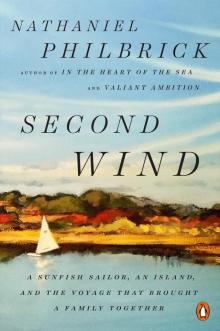 Second Wind: A Nantucket Sailor's Odyssey
Second Wind: A Nantucket Sailor's Odyssey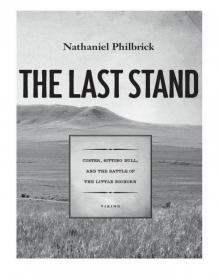 The Last Stand: Custer, Sitting Bull, and the Battle of the Little Bighorn
The Last Stand: Custer, Sitting Bull, and the Battle of the Little Bighorn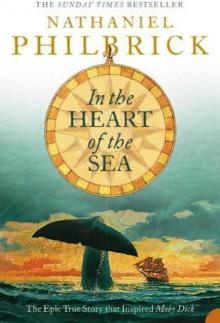 In the Heart of the Sea: The Epic True Story That Inspired Moby-Dick
In the Heart of the Sea: The Epic True Story That Inspired Moby-Dick Away Off Shore: Nantucket Island and Its People, 1602-1890
Away Off Shore: Nantucket Island and Its People, 1602-1890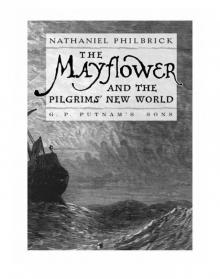 The Mayflower and the Pilgrims' New World
The Mayflower and the Pilgrims' New World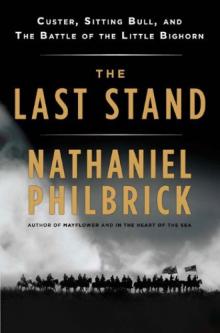 The Last Stand: Custer, Sitting Bull and the Battle of the Little Big Horn
The Last Stand: Custer, Sitting Bull and the Battle of the Little Big Horn Second Wind
Second Wind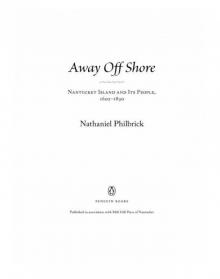 Away Off Shore
Away Off Shore The Mayflower and the Pilgrims' New World*
The Mayflower and the Pilgrims' New World* Sea of Glory
Sea of Glory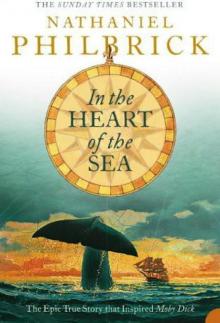 In the Heart of the Sea
In the Heart of the Sea The Last Stand
The Last Stand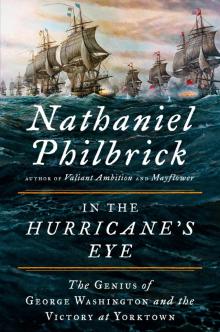 In the Hurricane's Eye
In the Hurricane's Eye